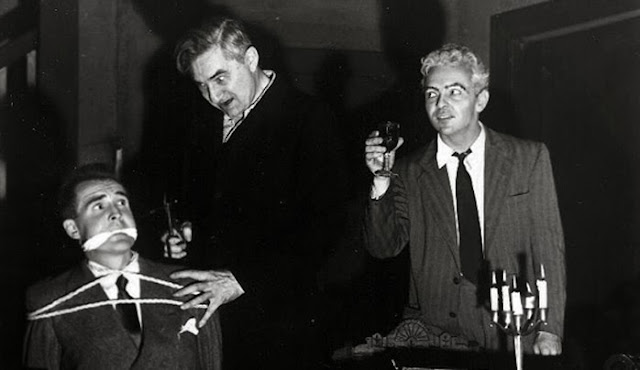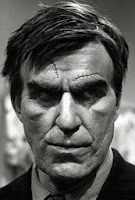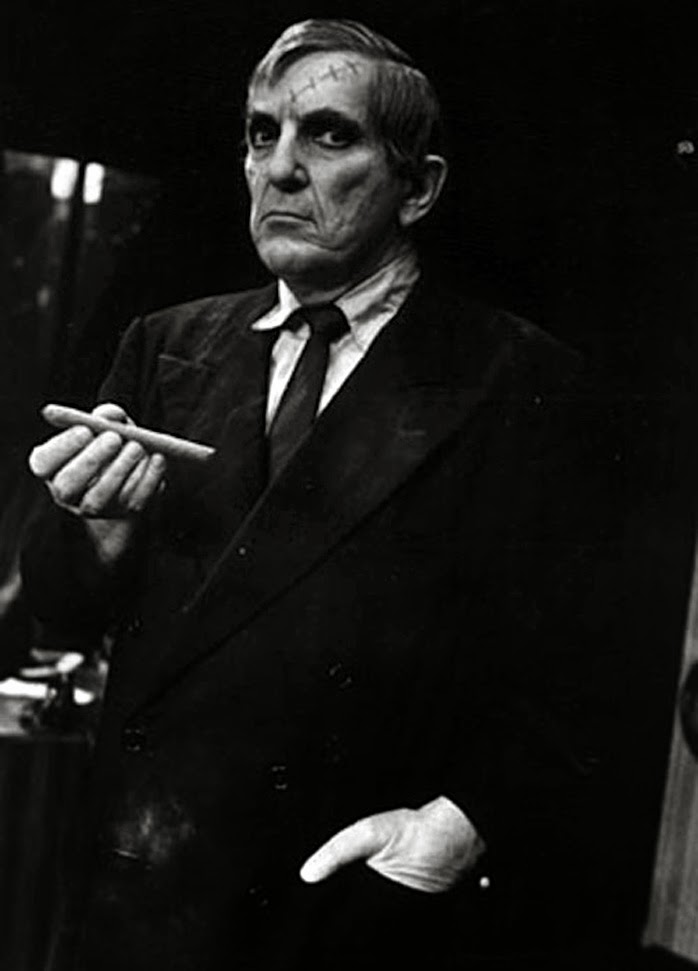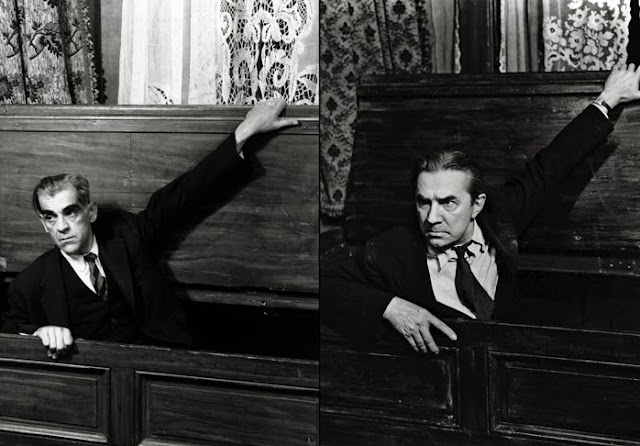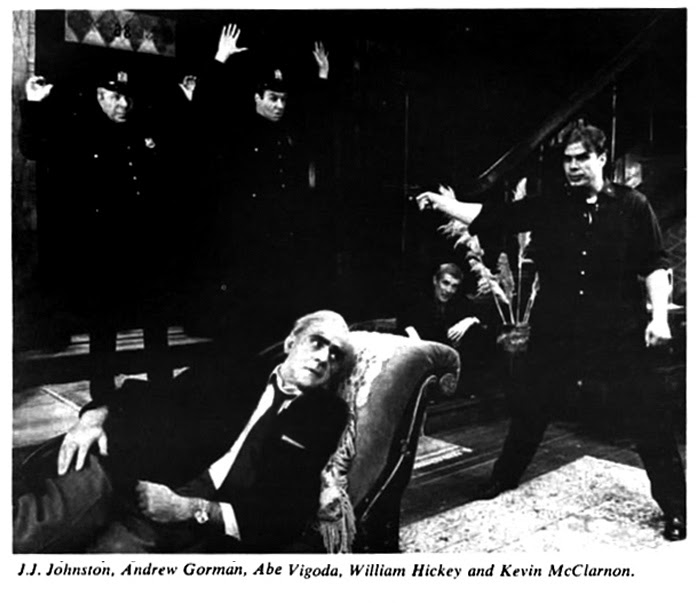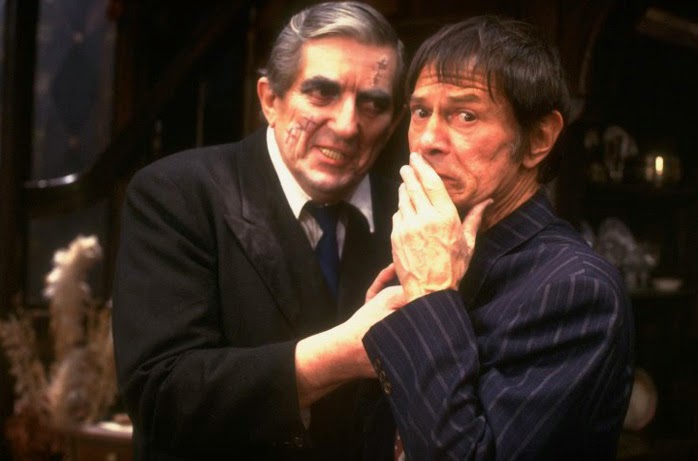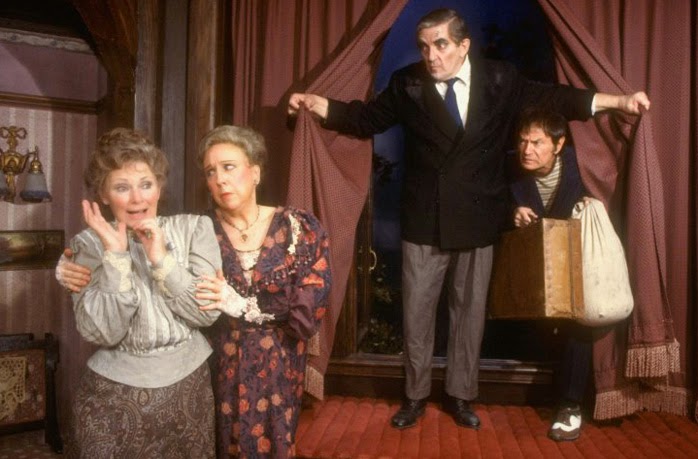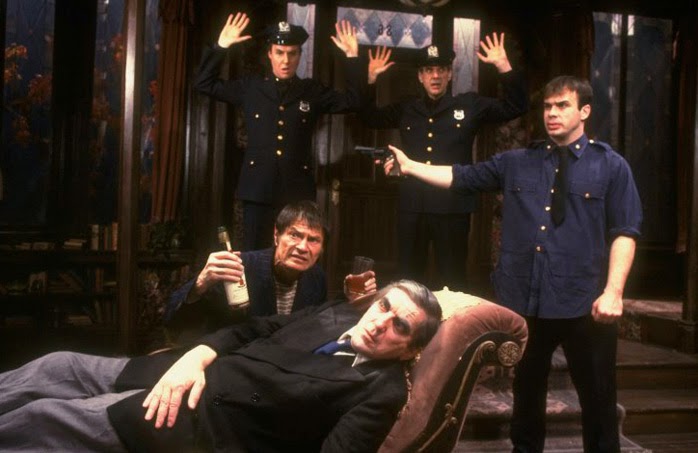By PATRICK McCRAY
Feast your eyes on the Art Deco inferno of Weimar angst and fury! The scars of the Great War will never heal! Satanism runs amok, with potential necrophilia skipping not far behind! Look there, on the screen; it’s THE BLACK CAT! Boris and Bela at last match wits and share the screen for the first time!
It can reduce/elevate any horror fan to express the passion of a Sam Kinison.
Plot is not the essential element to THE BLACK CAT, but so what? There’s no plot to a piece of music by J.S. Bach, but that doesn’t stop it from being a compelling and hypnotic narrative journey. So, it’s much the same for Edgar G. Ulmer’s classic, black and white tone poem, THE BLACK CAT. This is a 66 minute feast of strange and wondrous details from a world of secrets too dark for us to completely know.
At least, that’s what it feels like.
Let me get some things out of the way right now, before the Mikes and Joels of the world make hay. (I feel the need to do this since I once had to halt a screening for a group of MST3K-trained adults who thought they were cleverer than the movie. Spoiler Alert: they were not.)
Okay, so here’s the disclaimer. As horror movies go, it is neither traditionally scary nor impishly charming, although there are bickering police officials who get solid laughs while debating about tourism. And, come to think of it, David Manners and Julie Bishop seem to have a lot of fun as the American couple who find themselves in the midst of the war on morals and memory that exists between the protagonists. The writing is sometimes stiff. Although only sixty-six minutes, there are moments when it drags. (Perhaps because of the reported interference by Universal.) But none of those things are the point.
The film still remains one of the most compulsively watchable symphonies of amazing details in all of cinema. It does what movies are supposed to do; it shows you things you never imagined or possible, with people you never dreamed could have existed, in conflicts beyond the reckoning of anything average or mundane. Although I would not call it “scary,” it is seeped in dread and mystery and sadness and repressed rage. That’s a trade I’ll take.
The plot concerns Bela Lugosi as Vitus Werdegast, a brilliant psychiatrist and survivor of a POW camp where he encountered his greatest nemesis, Hjalmar Poelzig, played by Boris Karloff. Poelzig is a visionary architect and Satanic leader, somewhere between Gropius and Crowley. He had stolen Vitus’ wife and child, and then married the latter as the former seems to be held in suspended animation. Yes, in a 1934 movie. Vitus has “accidentally” arrived at Poelzig’s home with two American tourists in tow, and the film becomes a sometimes quiet, sometimes furious, always intense test of wills between Vitus and Hjalmar, often with human lives at stake.
By the end, a Satanic ceremony has broken out (with worshippers wearing tuxes and gowns beneath the robes in a touch of class that would have made Dok LaVey proud.) Guns are brandished. Bela skins Boris alive. Manners and Adams escape. And, in a motif that would be echoed in BRIDE OF FRANKENSTEIN, Vitus concludes that they belong dead, too. The house is demolished in an explosion he detonates, taking the prison camp upon which it was built, with it.
It’s a grim movie, so what makes it work?
I remember when I first saw it on the late movie when I was thirteen (a good year for me to see old films.) There were Boris and Bela, dressed to the nines and showing class, panache, and restraint as they went about their war of wits. (And let this be another nail in the coffin of the argument that Lugosi was incapable of subtlety. Both he and Karloff show a kind of quietly meditative intensity worthy of a Pinter play.) The set, though, seemed to be from the future. I asked my all-knowing mother about this, and she explained that it was Art Deco. I had seen the style before, but usually in recreations or as small, architectural elements.
I had never witnessed an entire world sliced by its severity. While it should have been a clean, calming, fear-free setting, Ulmer presents it as a Kryptonian Hell. It is as icily merciless and nakedly decadent as Poelzig, whose makeup and hair seem equally angular and severe. The architecture is the story. It is the mechanized and perfected new world, mercilessly ready to highlight>copy>replace the pomp, ceremony, and style of Vitus’ old world charm. You know, basically the Borg Cometh. The angst of a Europe desolated by one war and then rebuilt for another is made excruciatingly clear… and nauseatingly seductive at the same time. What a duality with which Germany was faced. Seductive, simple solutions for living, indeed.
It all seems so clear after World War II. What’s amazing is that the film was sending such a resonant warning and, perhaps, plea for action prior to the war. Of course, Hollywood inherited so many refugees from Germany that it’s also not surprising.
Ironic. The horror genre is so often marginalized, and yet, had it not been a horror film, would we be looking at it, today?
And was I the one talking about the film being more style than substance?
I take it back.
Patrick McCray is a comic book author residing in Knoxville, Tenn., where he's been a drama coach and general nuisance since 1997. He has a MFA in Directing and worked at Revolutionary Comics and on the early days of BABYLON 5, and is a frequent contributor to The Collinsport Historical Society. You can find him at The Collins Foundation.


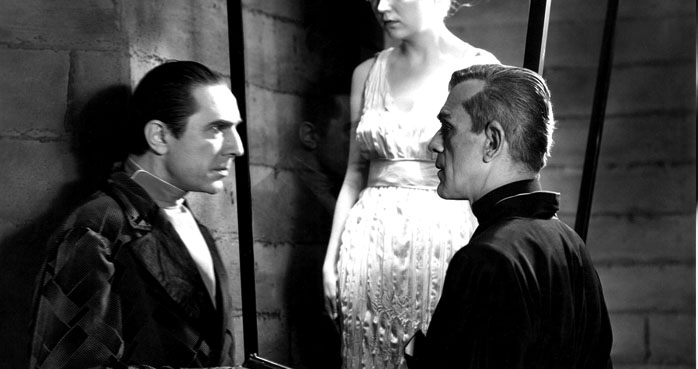
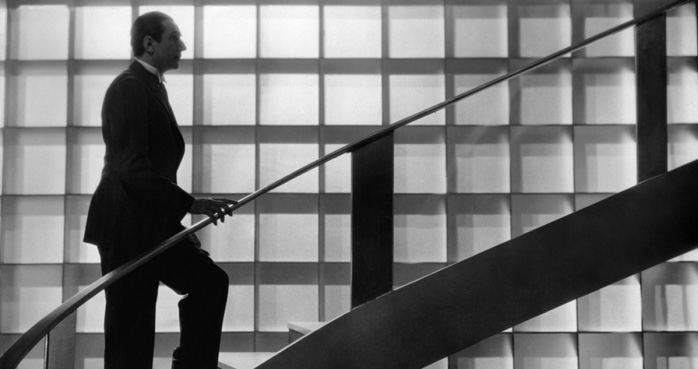
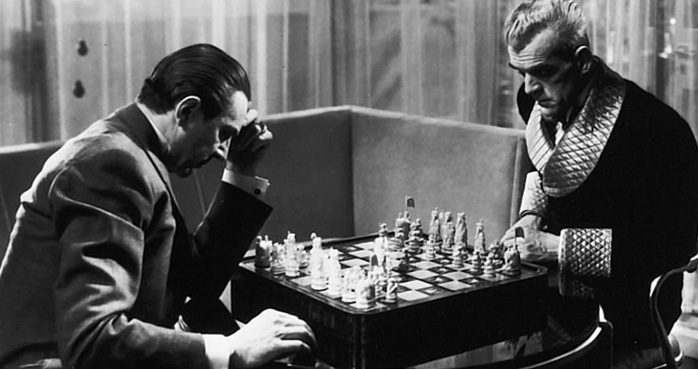
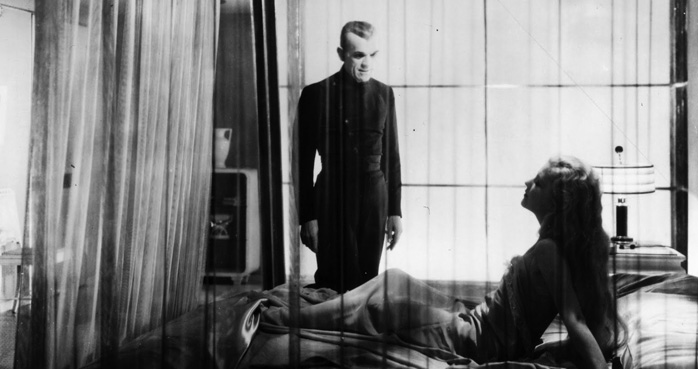
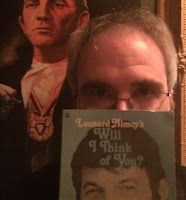
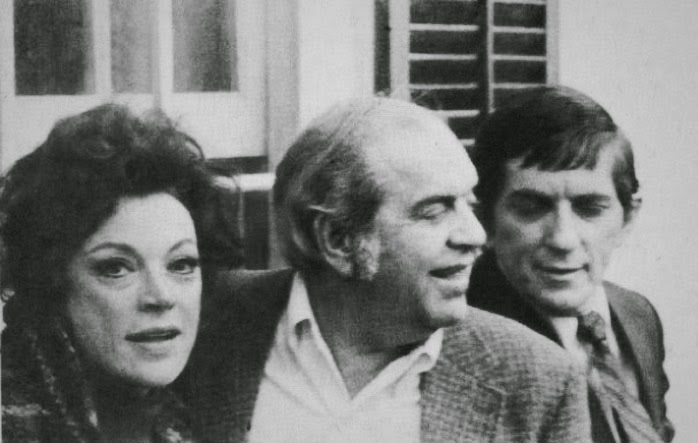
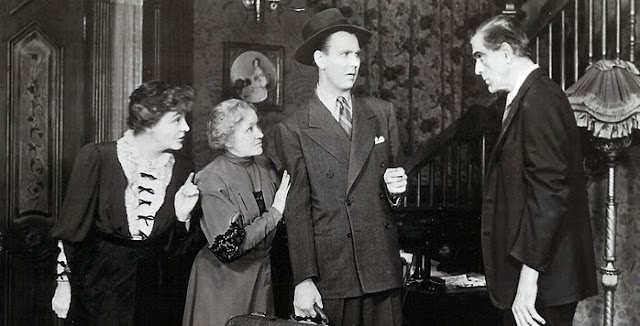
_03.jpg)
